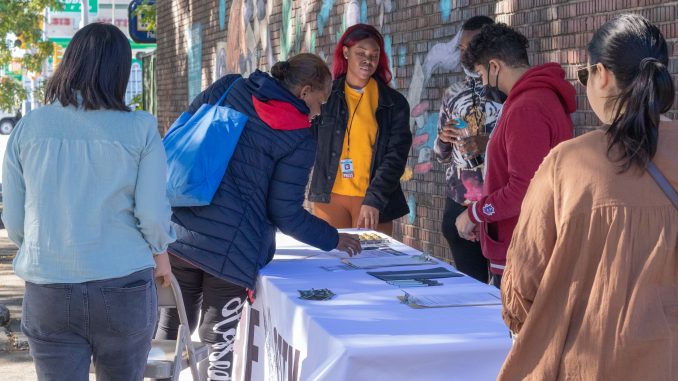
BY KELSEY SANTOS
Starrett City, a neighborhood in East New York, Brooklyn recognized for its abundance of 20-story housing towers, experienced the highest rate of deaths due to COVID-19 at about three times the citywide rate. The neighborhood, which is predominantly Black, Latino and Russian, is home to many elderly residents who have lived in the community for decades. Bordering the Belt Parkway and Canarsie, Starrett City is largely reliant on MTA buses for transportation, as the nearest subway stop is about a mile away.
The Brooklyn Public Library Spring Creek location teamed up with the non-profit news organization, THE CITY, to speak to residents in Starrett City. Journalists interviewed residents about their experience with COVID-19 and how it impacted them.
“I work with the elderly population, so a lot of people that I knew when I finally got a chance to go back to work in the nursing homes a lot of them had passed away,” said Michael Harley, a resident of Starrett City. “So it affected the older people and people we really cared about so it was really unfortunate.”
Harley is an active resident in his community. He is an entertainer for one of the cultural centers at Starrett City. He sings, DJs, and more for the elders to escape from the world and bring positivity to enlighten everybody. Harley, who said he lost friends and family to COVID-19, said he has witnessed the impact the pandemic has had on the people.
“It’s a dilemma, it is exacerbated by mental health issues we’re having in the city. It’s been difficult to kind of push ahead and say ‘oh COVID is over’, but also the resources have to trickle down to some of the communities that are affected,” Harley said. “I think people should invest more in this community, I know we’re right budding with Canarsie and Brownsville, and Ozone Park. I see money coming into this neighborhood. I just wish it was distributed more equally to everybody.”
Many residents said unemployment has impacted the neighborhood. Community members are selling food and items on the sidewalk throughout the pandemic to generate income.
“I couldn’t get a job, there was no money so I had to basically settle here for something,” said Leonardo Swady, a resident of Starrett City.
Swady lost his job when COVID-19 was at its peak. He was having a hard time making money to survive, so he decided to sell soup and other cultural food in front of one of the towers, which is also where he lives. Swady said the price increase of groceries has affected his small business.
“The chicken went up for the chicken soup. At first it was like 20 dollars and over time it went up to like 34 dollars within like one year,” says Swady. “And that caused me to raise my prices and people were complaining.”
Before supermarkets began to raise prices on groceries, Swady used to sell soup for $6 to $10. Now, he sells his soup for $12, and customers are less eager to buy from him, he said.
“COVID has changed the world. Everything feels different,” says Swady. “It’s really hard to connect with people without them wanting something from you. It’s the new norm.”
